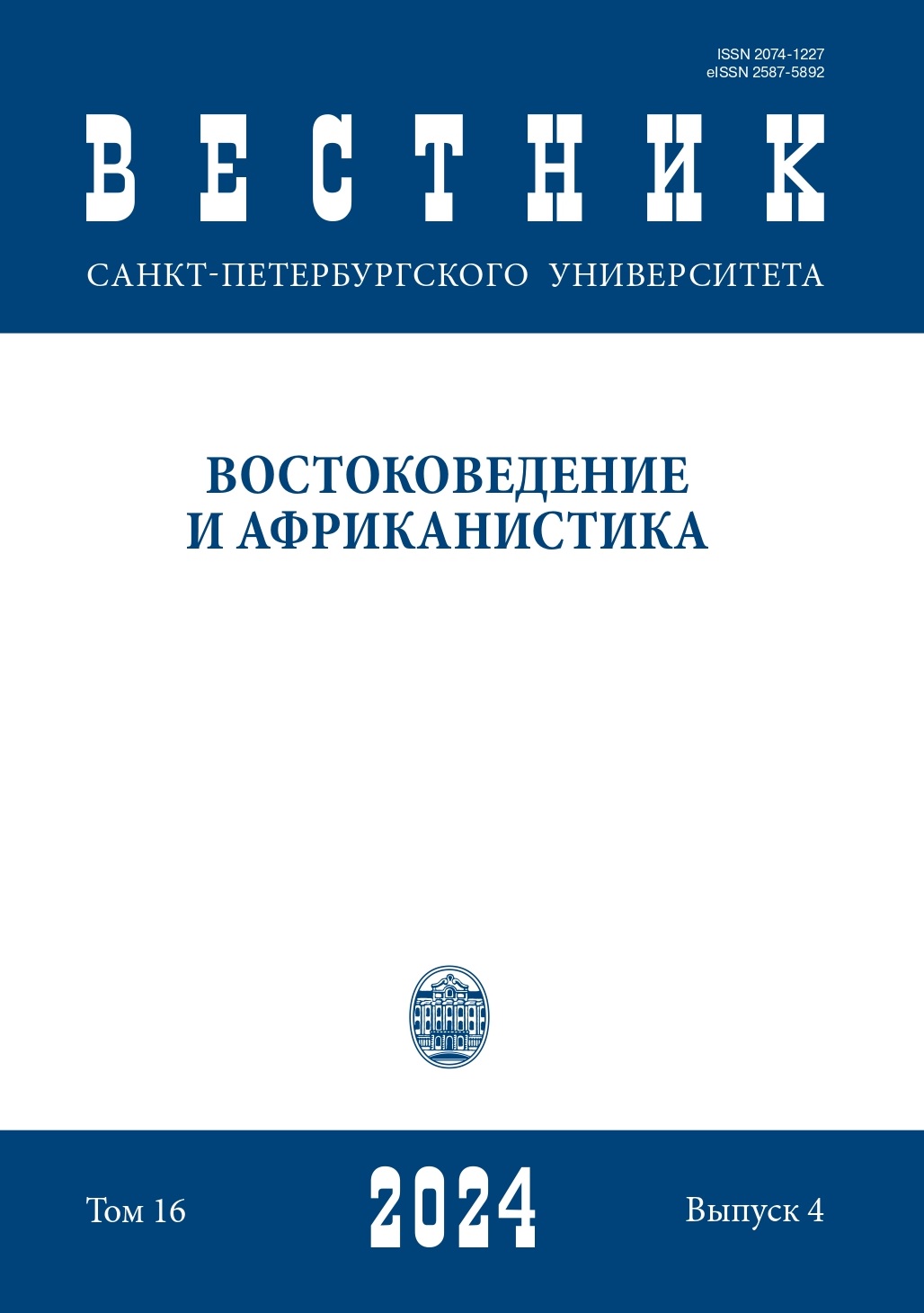Attributive Syntactic Patterns in Turkish and Japanese
DOI:
https://doi.org/10.21638/spbu13.2024.408Abstract
The paper expands on the idea of analyzing the syntax of the Japanese language through the prism of V. G. Guzev’s syntactic theory, as Turkish, on the material of which the theory was developed, and Japanese show a certain degree of typological similarity. The article explores attributive syntactic patterns of Japanese and Turkish from the point of view of this theory. Objective, attributive and adverbial models existing in the two languages are considered, and the existing similarities and differences are established. Study shows that adjectives in both languages are indifferent to whether the trait belongs to a noun or a verb. Peculiarities of direct object case marking in both languages are explored. Due to differentiated object marking phenomenon Turkish direct object may not be marked with accusative case suffix. Similarly, Japanese direct object is often affected by the omission. A comparative analysis of Turkish ezafe and Japanese ezafe-like grammatical models shows that these languages demonstrate a certain degree of similarity. Some of the Japanese ezafe-like models have emerged under the influence of Chinese. The paper discusses the substantive-adjective forms of Turkish, one of the important distinguishing features of V. Guzev’s theory, and presents their Japanese counterparts. The terminology of the Polish researcher of the Japanese language A. Jablonski took an important place in the study. Namely, regular adverbs and quasi-adverbs are distinguished, the former being considered as part of the adverbial syntactic subpattern and the latter as part of the attributive syntactic subpattern.
Keywords:
Japanese, Turkish, contrastive linguistics, syntax, object, attribute, adverbial, attributive construction
Downloads
References
Downloads
Published
How to Cite
Issue
Section
License
Articles of "Vestnik of Saint Petersburg University. Asian and African Studies" are open access distributed under the terms of the License Agreement with Saint Petersburg State University, which permits to the authors unrestricted distribution and self-archiving free of charge.





